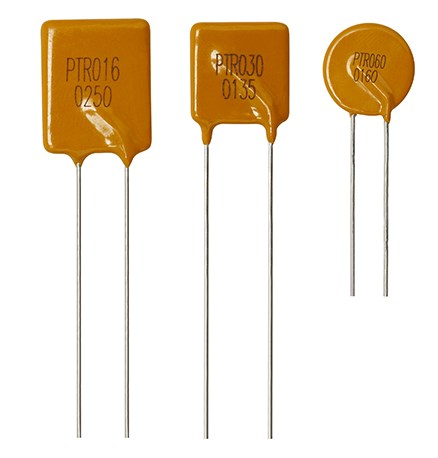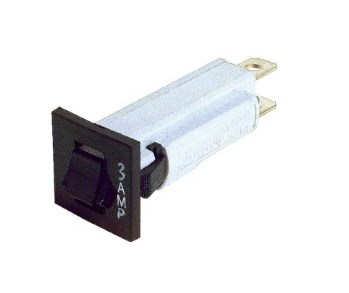OUTLINE:
Everything You should Know about 3 Amp Resettable Fuse
 189
189In the ever-evolving landscape of electrical components and safety mechanisms, understanding the role of various devices is crucial for both professionals and enthusiasts alike. One such indispensable element in electronic circuits is the 3 Amp resettable fuse.
As we delve into the realm of electrical protection, this guide aims to shed light on what precisely a 3 Amp resettable fuse is, its significance in circuitry, and how it functions to safeguard electronic systems.
Whether you're a seasoned engineer or a curious novice, join us on this exploration to unravel the mysteries of this essential component and gain valuable insights into its applications and advantages.

What Is A 3 Amp Resettable Fuse [Detailed Information]
Here comes the definition of 3 amp resettable fuse:
A 3 Amp resettable fuse, also known as a resettable polymeric positive temperature coefficient (PPTC) device or polyfuse, is a type of overcurrent protection device commonly used in electronic circuits.
Unlike traditional fuses that require replacement once they trip, resettable fuses automatically reset themselves after the fault condition is removed. This feature contributes to their cost-effectiveness and convenience.

What Is A 3 Amp Resettable Fuse Used for
A 3 Amp resettable fuse serves as a crucial component in electronic circuits, providing overcurrent protection and safeguarding sensitive equipment from potential damage. Here are some common applications and uses of a 3 Amp resettable fuse:
1. Power Supplies:
Resettable fuses are often employed in power supply circuits to protect against overcurrent events.
They help prevent damage to power supplies and connected devices in case of a short circuit or excessive current draw.
2. Consumer Electronics:
Various consumer electronic devices, such as televisions, audio systems, and computer peripherals, utilize resettable fuses for protection.
These fuses contribute to the overall safety and reliability of the electronic equipment.
3. Automotive Electronics:
In automotive applications, resettable fuses play a vital role in protecting electronic components and systems from overcurrent situations.
They are commonly used in vehicles for applications like dashboard electronics, control modules, and entertainment systems.
4. Telecommunications Equipment:
Resettable fuses are integral to the protection of telecommunications equipment, including routers, switches, and communication devices.
They help maintain the integrity of electronic circuits and ensure uninterrupted connectivity.
5. Control Systems:
Industrial control systems often incorporate resettable fuses to safeguard electronic control panels and PLCs (Programmable Logic Controllers). This ensures the reliability and longevity of critical automation components.
6. Medical Devices:
Medical equipment relies on resettable fuses to protect sensitive electronic components from overcurrent conditions.
Devices such as diagnostic equipment, patient monitoring systems, and medical imaging machines benefit from this type of overcurrent protection.

How many Watts can A 3 Amp Resettable Fuse Take
A 3 Amp resettable fuse can handle a maximum power of three hundred and sixty watts when operating at a voltage of one hundred and twenty volts.
It's important to note that the power capacity may vary depending on the specific specifications of the resettable fuse and the voltage requirements of the application.
For precise information on the fuse's power-handling capabilities, it is recommended to refer to the manufacturer's datasheet or specifications.
Are 3 Amp Resettable Fuses Good
The suitability of a 3 Amp resettable fuse depends on the specific requirements and characteristics of the electronic circuit or device in which it is being used.
Here are some considerations regarding the advantages and limitations of 3 Amp resettable fuses:
Advantages
1. Automatic Reset:
One of the primary advantages is the automatic reset feature. After tripping due to overcurrent, these fuses reset themselves once the fault is removed.
This can be advantageous in applications where continuous operation is critical, as it eliminates the need for manual intervention.
2. Cost-Effective:
Resettable fuses can be more cost-effective in the long run compared to traditional fuses. Since they reset themselves, there's no need for frequent replacements.
3. Space-Efficient:
Resettable fuses are typically compact in size, making them suitable for applications where space is limited.
4. Versatility:
Available in various current ratings, 3 Amp resettable fuses offer flexibility to meet the protection requirements of different electronic circuits.
Limitations
1. Trip Time:
Resettable fuses may have a longer trip time compared to traditional fuses. In certain applications that require very fast response times, this delay could be a limitation.
2. Precision:
Resettable fuses may not provide the same level of precision as some other overcurrent protection devices. For applications that demand highly accurate and predictable trip characteristics, alternative protection methods might be considered.
3. Temperature Sensitivity:
Resettable fuses rely on temperature changes to reset. Extreme temperature conditions could affect their performance, and it's essential to consider the operating environment.
4. Voltage Rating:
It's crucial to ensure that the voltage rating of the resettable fuse matches the requirements of the application. Using a fuse with a lower voltage rating may compromise safety.
The Replacement for A 3 amp Resettable Fuse
When replacing a 3 Amp resettable fuse, it's essential to select a replacement component that meets the specific requirements of your electronic circuit or device.
Here are the steps to guide you through the replacement process:
1. Check the Specifications:
Refer to the datasheet or specifications of the original 3 Amp resettable fuse.
Note key parameters such as voltage rating, current rating, trip characteristics, and any other relevant details.
2. Choose a Compatible Fuse:
Select a resettable fuse with the same or very close specifications as the original.
Ensure that the replacement fuse has the same current rating (3 Amps) and voltage rating to maintain the safety and integrity of the circuit.
3. Consider Time-Current Characteristics:
Depending on your application, you may need to consider the time-current characteristics of the fuse.
Some applications require specific trip times, and the replacement fuse should have similar characteristics.
4. Check Form Factor and Mounting:
Ensure that the physical dimensions and mounting style of the replacement fuse match those of the original.
This includes considerations such as package type, lead spacing, and overall size.
5. Verify Operating Conditions:
Check if the replacement fuse can operate within the temperature and environmental conditions specified for your application.
Some resettable fuses may have temperature or environmental limitations that need to be considered.
6. Consult Manufacturer Recommendations:
If possible, consult the manufacturer's recommendations or guidelines for replacement components.
Manufacturers often provide information on compatible replacements or suggest alternatives.
7. Consider Application-Specific Requirements:
If your application has specific requirements or if you are unsure about the replacement, consult with the original equipment manufacturer (OEM) or an experienced electronics professional for guidance.
8. Install and Test:
Once you have selected a suitable replacement, carefully install the new resettable fuse in place of the original.
Power up the circuit and test its functionality to ensure that the replacement fuse provides the required protection without any issues.
The End
The 3 Amp resettable fuse emerges as a crucial guardian in electronic circuits. With its automatic reset, cost-effectiveness, and space efficiency, it finds applications across diverse industries.
Whether you're an enthusiast or a professional, understanding this component empowers informed decision-making for robust circuit protection. In the dynamic realm of technology, the 3 Amp resettable fuse stands as a reliable safeguard, ensuring uninterrupted functionality.
Armed with this knowledge, you're well-equipped to navigate electronic complexities and contribute to the resilience of systems in our connected world.

Disclaimer: The views and opinions expressed by individual authors or forum participants on this website do not represent the views and opinions of Chipsmall, nor do they represent Chipsmall's official policy.

share this blog to:

